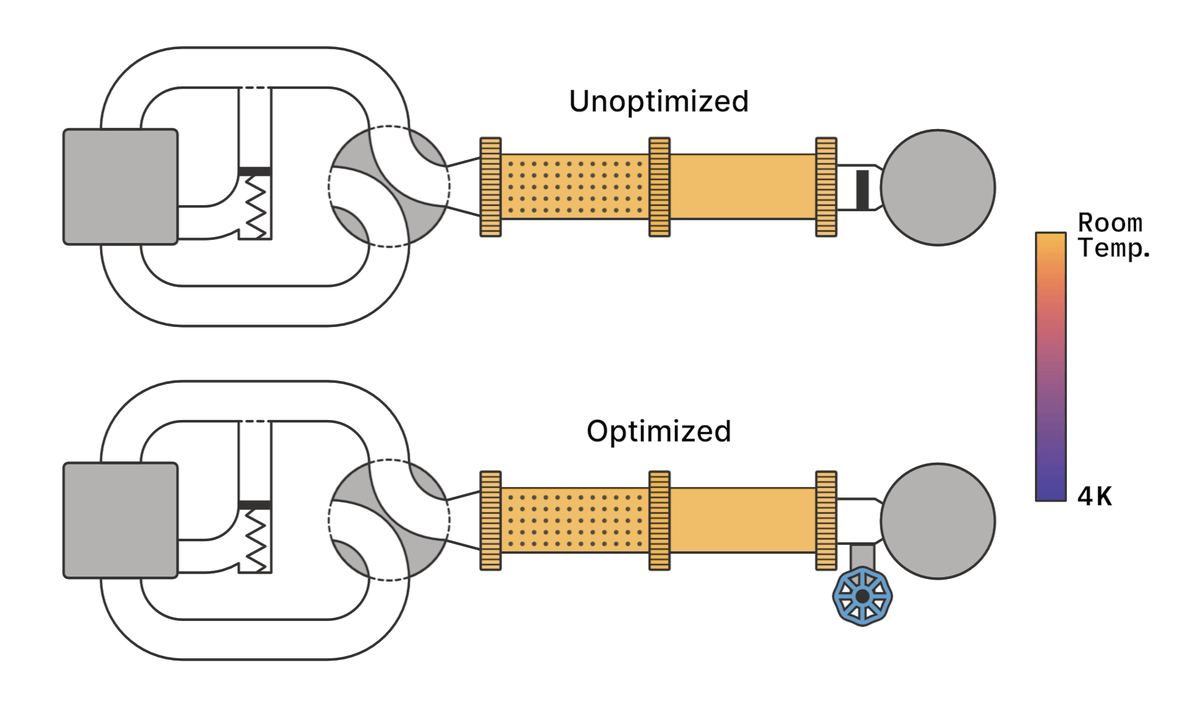BOULDER, Colo. — A breakthrough in refrigeration technology is putting scientists on the doorstep of the next leap forward in quantum computing. Scientists in Colorado have modified a common refrigerator to drastically reduce the time and energy required to reach bone-chilling temperatures just above absolute zero.
The team at the National Institute of Standards and Technology says their upgraded cryocooler prototype is designed to enable much faster cycles for cutting-edge quantum devices that require extreme cold to operate effectively. Rather than waiting over 24 hours for quantum computer components like qubits (the basic unit of information in a quantum computer) to cool down, researchers could potentially get to work the same day.
Think of it like this: regular computers need fans to keep their critical parts cool so they don’t overheat and work properly. A quantum computer works so fast and is so powerful that it literally needs to be in a room as cold as outer space just to work right. This new breakthrough in refrigerator cooling gets the computer chips there in a fraction of the time.
This accelerated cooldown rate, published in the journal Nature Communications, could unlock key advances across the quantum computing landscape. Quantum hardware must be kept at temperatures just a few degrees above absolute zero, in order to maintain the delicate quantum states that allow these computers to perform their mind-boggling calculations. For comparison, scientists believe quantum computers are so fast that they can solve complex problems in seconds — while a modern supercomputer would need decades to complete the same task!
Currently, the sluggish cooldown times of standard cryogenic refrigerators can significantly bottleneck research progress. With the ability to rapidly cycle between testing new component designs or running algorithms, scientists could pursue quantum breakthroughs at a much faster pace.
The NIST cryocooler tweaks improve efficiency by carefully managing how high-pressure helium gas flows into the device — known as the pulse tube refrigerator (PTR). While existing models were only optimized for peak performance once already chilled down, the new system continually adjusts gas flow as it progresses from room temperature. This prevents wasted gas from venting at higher temperatures — a major source of inefficiency.

Beyond just speeding up the time of quantum chilling, researchers say the upgraded refrigerators could also reduce the sizeable operating costs tied to cutting-edge quantum computing labs. Smaller, more efficient cryocoolers would require fewer supporting components and consume far less electricity and water resources for cooling. In fact, the team estimates that replacing these refrigerators with a new commercialized model of their prototype could save 27 million watts of power, $30 million in global electricity usage, and enough cooling water to fill 5,000 Olympic swimming pools every year!
Of course, there’s still work to be done to translate these laboratory results into real-world impacts. The researchers’ dynamic acoustic optimization scheme would need to be integrated into commercial PTR designs, and further engineering might be needed to fully mitigate the loss mechanisms they identified.
But the core message is clear: with a bit of clever physics and a lot of hard engineering, the cool-down bottleneck in quantum technologies might not be so constricting after all. And that could open the door to a new era of quantum breakthroughs, from ultra-secure communication to transformative computing capabilities.
